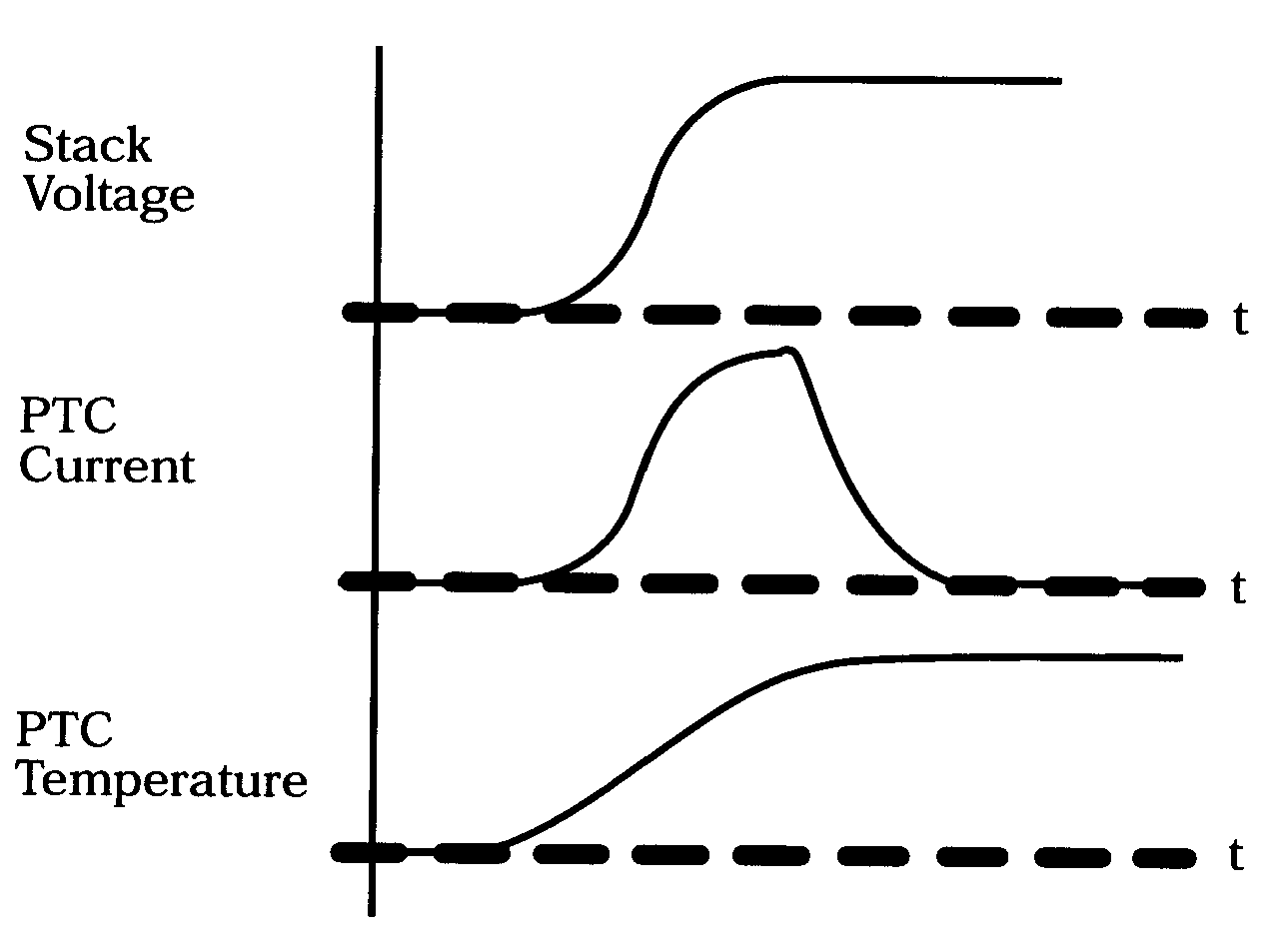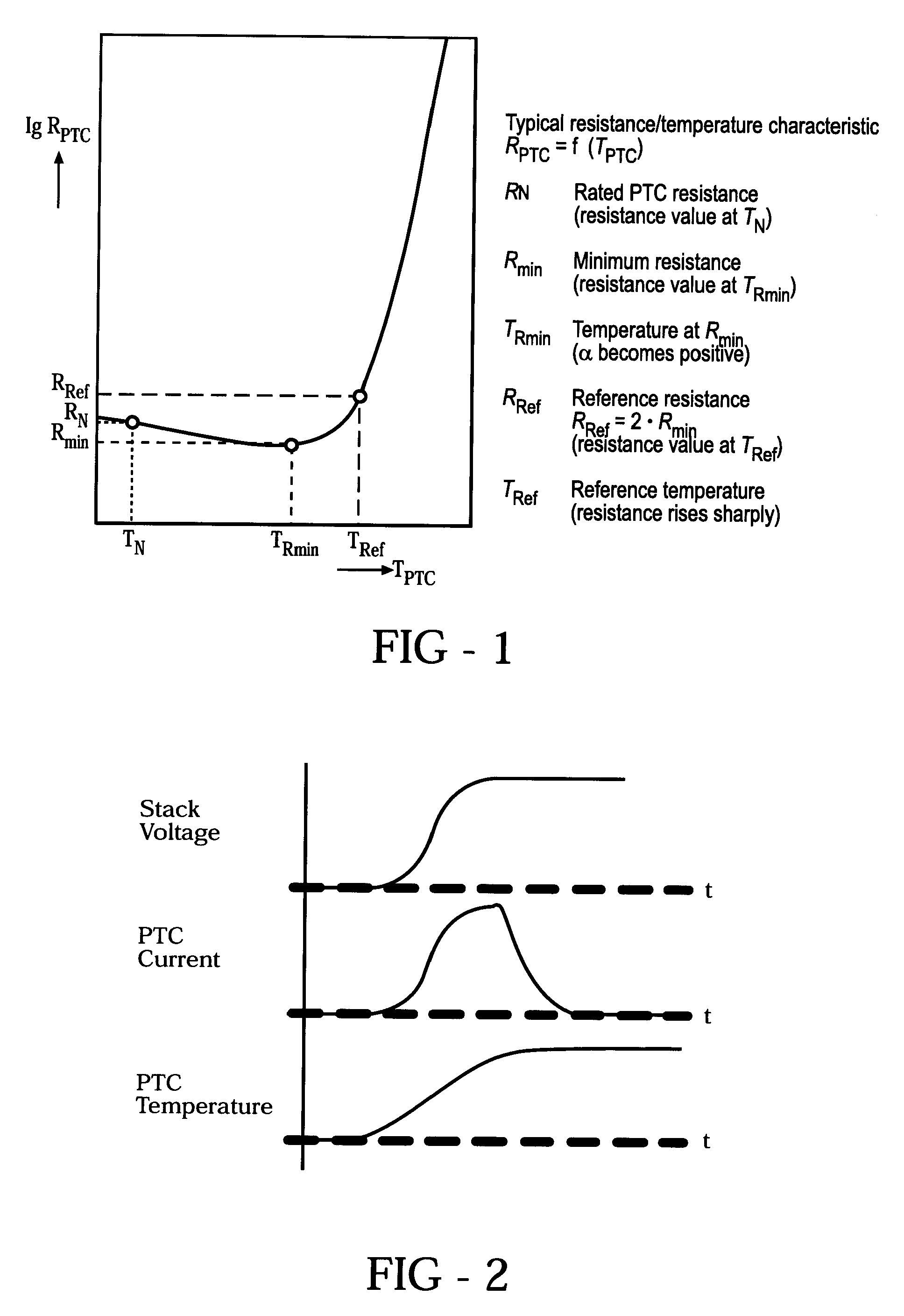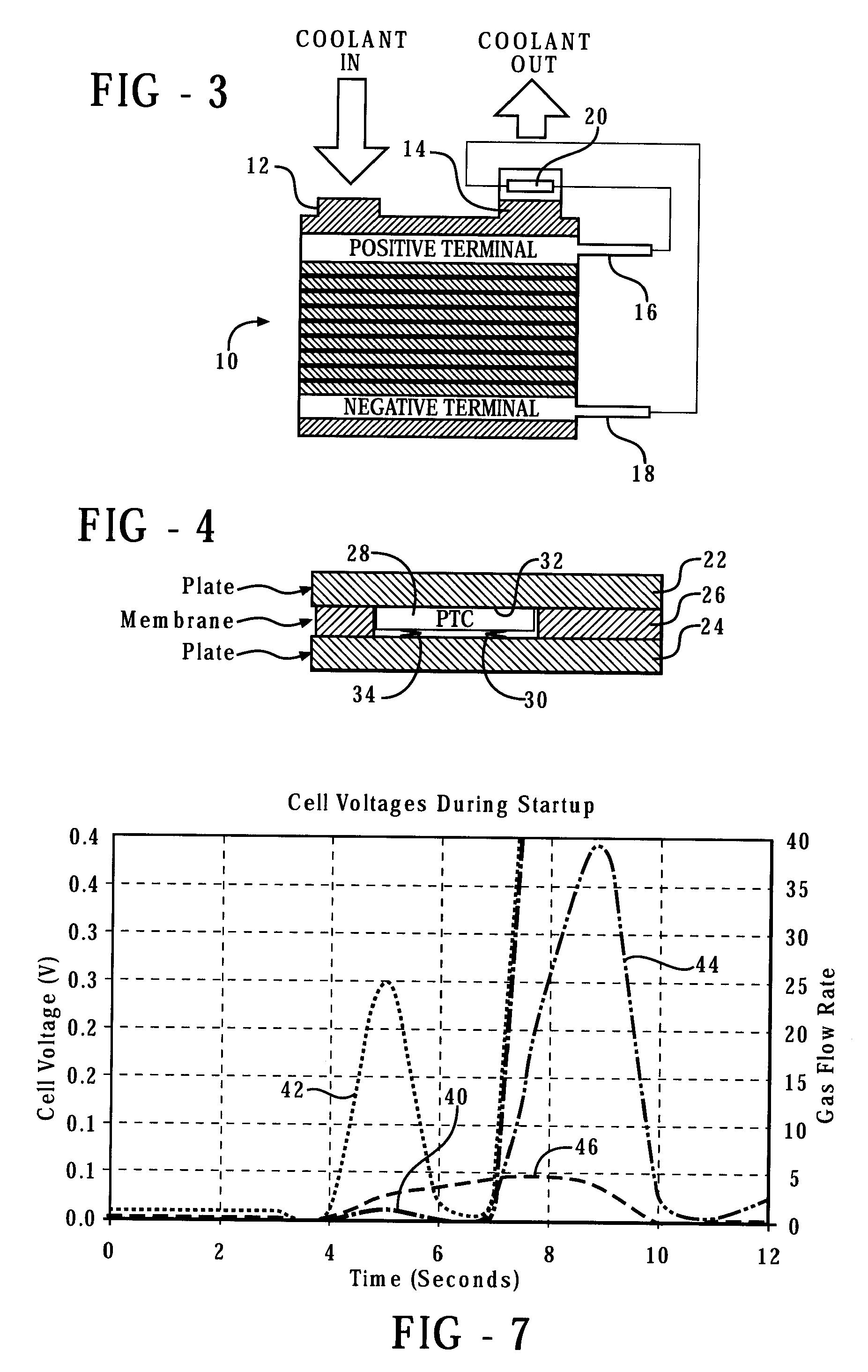PTC element as a self regulating start resistor for a fuel cell stack
a fuel cell and self-regulating technology, applied in the direction of fuel cells, cell components, fuel cell groupings, etc., can solve the problems of increased damage and mea damage, and achieve the effect of limiting the damage to the catalyst layer and prolonging the life of the fuel cell
- Summary
- Abstract
- Description
- Claims
- Application Information
AI Technical Summary
Benefits of technology
Problems solved by technology
Method used
Image
Examples
first embodiment
[0025]In the present invention, only one PTC element with a heat sink or coupled to the stack (e.g. coolant outlet) will be connected to a stack. In FIG. 3, a fuel cell stack has a coolant inlet 12 and a coolant outlet 14. Electrical power is generated to a load (not shown) connected between a positive terminal 16 and a negative terminal 18. A PTC element 20 is positioned at the coolant outlet 14 and is connected between the terminals 16 and 18. This element 20 would need to be designed for high voltage (up to 450 VDC) requiring a thicker PTC element to avoid shorting at the high voltage and a large contact area to get the “on” resistance down to levels where it will discharge the stack 10 in a reasonable time. The PTC element 20 is connected electrically across the entire stack and coupled thermally to the coolant outlet 14. The amount of time that the PTC element will remain in the low resistance mode is determined by the combination of its power dissipation and the heat transfer ...
second embodiment
[0026]Thin PTC elements could be integrated in every bipolar plate or membrane in the present invention. As shown in FIG. 4, plates 22 and 24 are positioned on opposite sides of a membrane 26. A PTC element 28 is positioned in a cavity 30 formed in the membrane 26. Screen printed PTC ink could be an option as well as long as it exhibits the same temperature / resistivity characteristics as shown above in FIG. 1. In a stamped design, the preferred location for the one per cell PTC element is near the coolant inlet header. This region has no reactant or coolant contact, yet is well coupled thermally to the coolant. The seal load from the neighboring cells will provide a contact force that is relatively insensitive to tolerances.
[0027]In FIG. 4, the PTC element 28 is bonded at 32 to the upper plate 22. A leaf spring 34 is positioned between the PTC element 28 and the lower plate 24 to enhance electrical contact.
[0028]FIG. 5 shows the embedded PTC element embodiment in more detail. The lo...
PUM
| Property | Measurement | Unit |
|---|---|---|
| contact area | aaaaa | aaaaa |
| thick | aaaaa | aaaaa |
| resistance | aaaaa | aaaaa |
Abstract
Description
Claims
Application Information
 Login to View More
Login to View More - R&D
- Intellectual Property
- Life Sciences
- Materials
- Tech Scout
- Unparalleled Data Quality
- Higher Quality Content
- 60% Fewer Hallucinations
Browse by: Latest US Patents, China's latest patents, Technical Efficacy Thesaurus, Application Domain, Technology Topic, Popular Technical Reports.
© 2025 PatSnap. All rights reserved.Legal|Privacy policy|Modern Slavery Act Transparency Statement|Sitemap|About US| Contact US: help@patsnap.com



